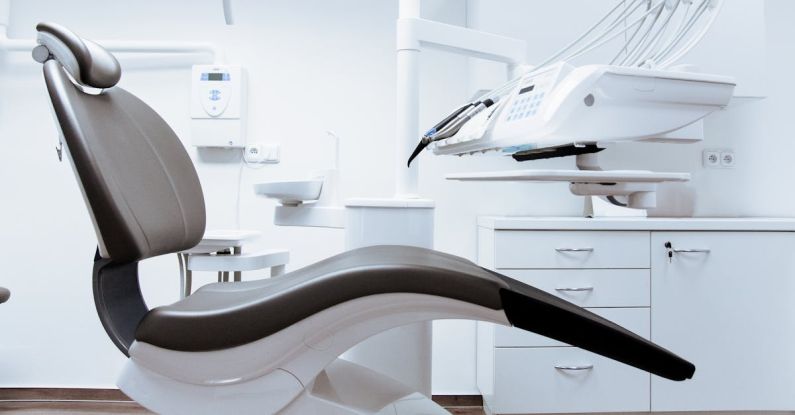The Cutting Edge: Composites in Medical Device Technology
In the ever-evolving landscape of medical device technology, the utilization of composites has emerged as a game-changer, offering a multitude of benefits that are revolutionizing the industry. Composites, defined as materials made from two or more constituent materials with significantly different physical or chemical properties, have found a pivotal role in enhancing the performance, durability, and versatility of medical devices. From improving patient outcomes to enabling groundbreaking innovations, composites are at the forefront of driving advancements in medical technology.
Enhancing Performance and Durability
One of the key advantages of incorporating composites in medical device technology is the significant enhancement in performance and durability. Unlike traditional materials such as metals or plastics, composites offer superior strength-to-weight ratios, making them ideal for applications where lightweight but robust materials are essential. This characteristic is particularly valuable in the development of orthopedic implants, prosthetics, and surgical instruments, where the structural integrity and longevity of the devices are paramount.
Moreover, composites exhibit excellent resistance to corrosion, fatigue, and wear, ensuring prolonged lifespan and reduced maintenance requirements for medical devices. This durability not only enhances the reliability of the devices but also minimizes the risk of failure, thereby improving patient safety and outcomes. In orthopedic implants, for instance, composites can withstand the mechanical stresses and strains experienced in the human body, resulting in implants that are both long-lasting and biocompatible.
Advancing Design Flexibility and Customization
The versatility of composites in medical device technology extends beyond performance and durability, offering unparalleled design flexibility and customization capabilities. By combining different materials in precise configurations, manufacturers can tailor the properties of composites to meet specific application requirements, ranging from stiffness and flexibility to radiolucency and thermal conductivity. This versatility allows for the creation of highly customized medical devices that address the unique needs of individual patients, leading to improved comfort, functionality, and overall treatment outcomes.
Furthermore, the moldability of composites enables the fabrication of complex geometries and intricate structures that would be challenging or impossible to achieve with traditional materials. This design freedom not only fosters innovation in device architecture and functionality but also facilitates the integration of advanced features such as drug delivery systems, sensors, and imaging technologies. In cardiovascular devices, for example, composites can be engineered to have tailored mechanical properties that mimic the natural tissues of the heart, resulting in devices that are both effective and biocompatible.
Enabling Minimally Invasive Procedures
Another significant impact of composites in medical device technology is their role in enabling minimally invasive procedures, which have revolutionized the field of surgery by reducing patient trauma, recovery times, and healthcare costs. Composites possess the unique ability to be fabricated into thin, flexible structures that can navigate through small incisions or anatomical pathways with ease, making them ideal for minimally invasive devices such as endoscopes, catheters, and laparoscopic instruments.
Moreover, the radiolucency of certain composite materials allows for enhanced visibility under imaging modalities such as X-rays, CT scans, and MRIs, providing surgeons with real-time feedback and guidance during minimally invasive procedures. This improved visibility not only enhances the accuracy and precision of surgical interventions but also minimizes the risk of damage to surrounding tissues, nerves, and organs. In neurosurgery, for instance, composites are used in the development of surgical tools and implants that can access deep-seated areas of the brain with minimal invasiveness, reducing the risk of complications and improving patient outcomes.
Driving Innovation and Future Prospects
The integration of composites in medical device technology represents a paradigm shift in the way healthcare is delivered, offering a myriad of possibilities for innovation and advancement in patient care. As research and development in composite materials continue to evolve, we can expect to see further breakthroughs in areas such as regenerative medicine, wearable health technologies, and personalized therapeutics. Composites have the potential to transform the landscape of medical devices, enabling the development of smarter, more efficient, and patient-centric solutions that enhance the quality of life for individuals around the world.
With the myriad of benefits that composites offer in terms of performance, durability, design flexibility, and minimally invasive capabilities, it is evident that these materials are poised to shape the future of medical device technology. By harnessing the unique properties of composites and pushing the boundaries of innovation, manufacturers and researchers are paving the way for a new era of healthcare that is safer, more effective, and more personalized than ever before. As we continue to explore the vast potential of composites in medical device technology, the possibilities for improving patient outcomes and advancing the field of medicine are truly limitless.






